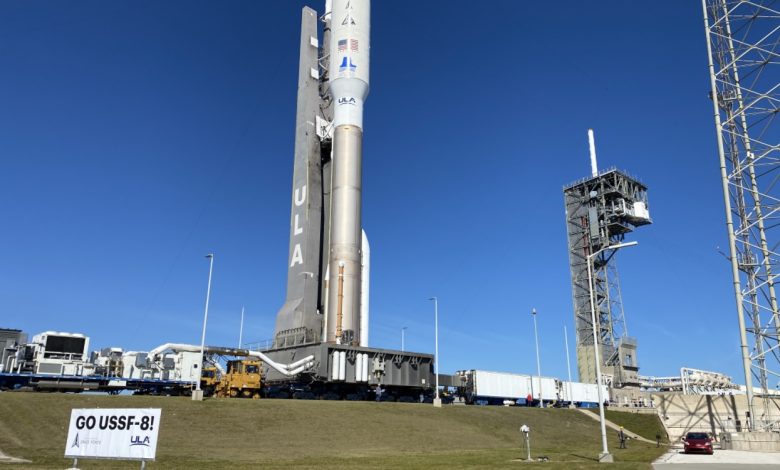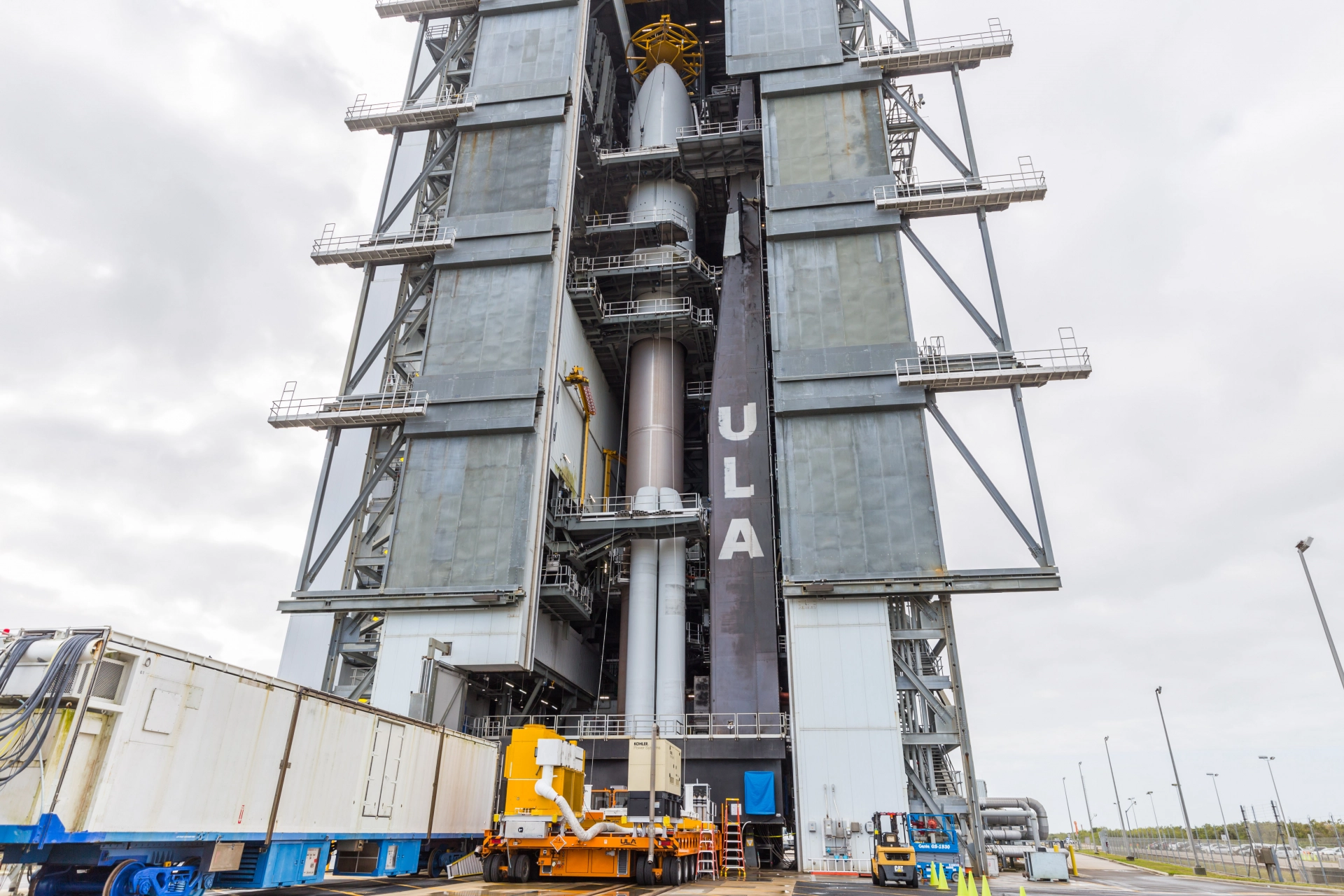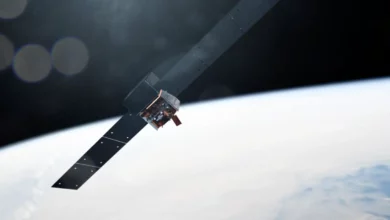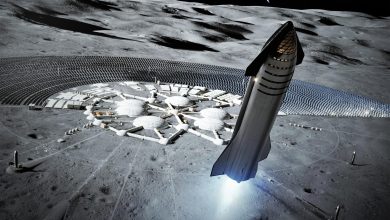
United Launch Alliance (ULA) has launched the Geostationary Operational Environmental Satellite (GOES)-T advanced weather satellite for the US National Oceanic and Atmospheric Administration (NOAA). GOES-T launched on an Atlas V 541 from Space Launch Complex (SLC)-41 from Cape Canaveral Space Force Station (CCSFS). The launch took place on March 1, 2022, at 4:38 PM EST (21:38 UTC).
GOES-T is the third satellite in the GOES-R satellite series, the 19th overall GOES satellite, and the second Atlas V launch of 2022. Following the launch, GOES-T will become GOES-18 and will be stationed in the GOES-West position, replacing GOES-17.
Payload and rocket overview
The GOES satellite constellation is a NASA and NOAA joint weather constellation providing continuous weather observations of the US and its surrounding areas.
GOES has its roots in the 1960s with the Applications Technology Satellite (ATS) program. ATS was NASA’s program to test satellites in Geostationary orbit (GEO) that could be used to observe the weather. The six satellite program was successful and led to the Synchronous Meteorological Satellite (SMS) Program.
The SMS program was NASA’s operational program to have continuous weather observations of the US. NOAA later became involved with the program, and it was renamed GOES. Since then, NASA and NOAA have continued to work together on the GOES program.
NASA manages the design and construction of both the spacecraft and instruments. NASA also selects the launch vehicle for the GOES spacecraft. NOAA manages the overall program while operating the satellites in orbit.
Despite issues seen with previous satellites while in orbit, the GOES program has successfully allowed for continuous observations for nearly 47 years.
The GOES-R program became operational with the GOES-R satellite, launched in November 2016. The GOES satellites, despite having individual letter and number designations, are also referred to by their program name, which is taken from the first GOES in that new series. For example, GOES-R was the first of the GOES-R program, of which GOES-T is also a part.
GOES-R itself launched on an Atlas V 541 and was successfully placed into a Geostationary Transfer Orbit (GTO).
Following multiple days of maneuvers, it successfully placed itself into GEO, where it was renamed GOES-16. Following its year of on-orbit testing, it was moved to the GOES-East position (an orbital position designation, not a specific satellite) and began its operation.
Its twin, GOES-S, was launched on an Atlas V 541 in March 2018 and successfully made it to GTO. It later moved to GEO where it began its testing. However, in May 2018, its Advanced Baseline Imager’s (ABI’s) cooling system started having performance issues.

Even though GOES-17, which was placed in the GOES-West position, was cleared for operations, it continued to have issues. GOES-17 has been taken out of operations multiple times, most recently in July 2021. Even GOES-16 was taken out of operations in July 2020.
During investigations, NOAA discovered that the ABI heat pipe was not transferring heat correctly to the satellite’s radiators due to a blockage in the pipes causing a restricted flow of coolant to the ABI and thus causing it to overheat. NOAA adjusted the instrument’s operations and conducted more testing, leading to a new cooling timeline.
L3Harris, the manufacturer of the ABI, redesigned the instrument for the GOES-T and GOES-U satellites. The new design uses less complicated hardware configurations that eliminate the filters that are susceptible to debris.
Software updates have been sent to GOES-17 to help fix the issues with the ABI. Currently, GOES-14 and GOES-15 are being used as backups for GOES-16 and 17. The fates of GOES-14/15 after GOES-T enters service have yet to be determined.
For the whole GOES-R program, the ABI is the primary instrument for imaging Earth. The performance issues on GOES-S, now named GOES-17, did not impede its entering service. However, the GOES-T satellite was delayed for over a year to fix the issues with the ABI instrument.
GOES-T is the latest satellite in the GOES-R program. Like the other three in the series, the satellite is based on the Lockheed Martin A2100 satellite bus. The A2100 is Lockheed Martin’s offering for medium Earth orbit and GEO satellites. Since its introduction, the A2100 has been used for both military and commercial missions.
Taking GOES-T from its initial concept to launch was a highly coordinated and collaborative effort between @NOAA, @NASA, @LockheedMartin, @L3HarrisTech, and @ULAlaunch.
Are you #ReadyToGOES tomorrow?
More: https://t.co/IIX58uDhQS#GOEST #CountdownToLaunch pic.twitter.com/pdOlpDLWi9— NOAA Satellites (@NOAASatellites) February 28, 2022
For the GOES-R program, the satellites have a dry mass of 2,857 kg. Fully fueled, each masses 5,192 kg and will have a lifetime of around 15 years.
Following the ABI redesign, the GOES-T satellite bus was completed in August 2020. Like the other A2100 satellites, GOES-T was produced and tested at the Lockheed Martin Waterton Facility in Colorado.
Pre-flight testing included thermal vacuum, acoustic/vibration, and electromagnetic examinations. These tests are used to see if the satellite can survive the harsh environments of both launch and space.
GOES-T began final preparations for launch in October 2021 when Lockheed Martin completed the Pre-Shipment and Operational readiness reviews. A month later, on November 10, GOES-T was moved from Waterton to the Buckley Space Force Base in Aurora, Colorado.
At Buckley, it was loaded onto a C-5 Super Galaxy aircraft where it was delivered to Kennedy Space Center. From Kennedy, it was moved to the Astrotech Space Operations processing facility. Here it was placed into temporary storage before continuing launch preparations.
While at Astrotech, the spacecraft underwent propellant loading for its LEROS-1c engine. The satellite was then moved into the encapsulation bay to be placed inside the Atlas V’s 5.4-meter diameter payload fairing.

With the encapsulation complete, the payload was moved to the pad at SLC-41 where Atlas V had been stacked.
The Atlas V rocket is ULA’s workhorse rocket. First launched in August 2002 on the Hotbird-6 telecommunication mission, Atlas V has since launched 90 times, with a nearly spotless record. After GOES-T, there are 24 remaining Atlas V launches before its retirement in favor of the upcoming Vulcan rocket.
The Atlas V used for this mission is designated AV-095.
Atlas V is a two-stage liquid-fueled rocket. The first stage booster is a single-engine stage utilizing a Russian-built RD-180 engine. The RD-180 generates 3,828 kN of thrust with a specific impulse of 337 seconds. This stage is 32.5 meters in length, 3.81 meters in diameter, uses RP-1/LOX, and burns for about four minutes.
For the initial part of the flight, the first stage can support up to five GEM-63 solid rocket boosters. These boosters, first introduced on the NROL-101 mission in November 2020, are manufactured by Northrop Grumman and are smaller versions of the GEM-63XL boosters set to launch on Vulcan.
Each booster generates 1,652 kN and burns for about 94 seconds. This mission will use four boosters.
The second stage is the Centaur, a hallmark of the Atlas family that was first used in 1962. Since then, the Centaur has evolved into the Common Centaur used today. To power the stage, an Aerojet Rocketdyne RL10C-1 engine is used to place its payload(s) into its final orbit. The RL10 engine is historic, having been used over several generations of rocket families and has been produced over 500 times.
The RL10C-1 uses liquid hydrogen and liquid oxygen to generate 101.8 kN of thrust with a specific impulse of 449 seconds. Centaur is also where the Atlas V rocket’s avionics systems are housed. Centaur is 3.05 meters in diameter and 12.6 meters in length.
Encapsulating both the Centaur upper stage and the GOES-T satellite is the payload fairing. Seen with the ULA rockets, a four or five-meter fairing can be used to better suit a customer’s needs. The five-meter fairings used on the GOES-T mission are manufactured from RUAG space.
To show what variant of the rocket is used on a given mission, ULA uses a three-digit number. The first digit denotes the diameter of the payload fairing, the second indicates the number of solid rocket motors, and the third represents the number of RL10 engines on the Centaur upper stage.
On GOES-T, the Atlas V was a 541, meaning a five-meter fairing with four GEM-63 boosters and a single RL10C-1. Using the Atlas V 541 allows ULA to put GOES-T into an optimized GTO that can place the satellite closer to its final orbit and therefore allows for less fuel consumption. This will help extend GOES-T’s operational lifetime.
This is not the first time a GOES satellite has launched on an Atlas nor a ULA heritage rocket. All GOES satellites have launched on either Delta or Atlas rockets.
However, with GOES-U selected to use the Falcon Heavy from SpaceX as its launch vehicle and with Atlas V’s pending retirement, this is the last GOES weather satellite to launch on an Atlas.
Launch
At T-2 hours (L-3 hours), a 30-minute planned hold gives teams margin to deal with any possible issues. Following a poll, the final go for propellant loading is completed. Two hours before launch, the countdown resumes, and liquid oxygen begins flowing to both the Centaur and Atlas stages.
Just under 90 minutes to launch, the Centaur begins liquid hydrogen loading. During this time, the guidance, engine gimbal checks, and overall system tests are completed before launch.
Propellant loading is completed around 40 minutes before launch. At T-4 minutes (L-34 minutes), the second and final planned hold begins.
Weather balloons are released and the data is sent to the Denver Operations Support Center where it is used to determined what steering profile should be used with the predicted winds.
At T-7 minutes, the final Go/No-Go poll is conducted. Once the poll is complete and authorization to proceed received, the countdown resumes at T-4 minutes.
The RD-180 engine ignites at T-2.7 seconds. At T+1 second, the four GEM-63 boosters ignite and the Atlas V lifts off the pad. At T+5.3 seconds, the Atlas beings a pitch and roll maneuver to reach the proper flight profile while minimizing the loads on the rocket.
The four GEM-63 boosters burn out 94 seconds into the flight and are released 24 seconds later.
With the rocket out of the atmosphere, payload fairing jettison occurs at T+3 minutes 30 seconds followed by Atlas engine shutdown at T+4 minutes 22 seconds.
Six seconds later, the Atlas separates from the Centaur, and 10 seconds after that, the Centaur main engine ignites.
Just under eight minutes after Centaur’s ignition, the rocket reached its initial parking orbit. Centaur then begins an approximately 11-minute coast to a point directly over the equator.
Centaur then reignites to boost the apogee to around the GEO altitude of 36,000 km. The centaur burns for five minutes. Following the burn, it begins a long-duration coast phase.
After three hours, Centaur burns for a third and final time. This burn raises the perigee close to 8,900 km and lowers the inclination to 9.4 degrees. After a final two-minute coast, GOES-T separates from Centaur in 35,286 km by 8,876.7 km at a 9.4-degree inclination.
Post-launch
Following separation from the Centaur, GOES-T will begin an orbit-raising operation similar to its sisters. Orbit raising will be completed on March 23. Once in GEO, GOES-T will be renamed GOES-18 and will be in the 89.5-degree and 136.2-degree locations for its on-orbit testing. This testing will make sure the spacecraft and instrument systems are ready for operations.
The ABI instrument is mounted on the nadir, Earth-facing side of the https://youtu.be/5Ooj-ShktEAGOES platforms. ABI is a multi-channel passive imagining radiometer designed to observe the Earth and its weather activity.
A second scientific instrument, Geostationary Lightning Mapper (GLM), is also mounted on the nadir side of GOES. GLM will monitor Earth for sudden, visual events to help build a map for lightning activity.
The second set of instruments is mounted on the satellite’s solar panel to track the Sun. The first is the Solar Ultraviolet Imager (SUVI), which operates in the extreme ultraviolet, capturing full images of the Sun to monitor eruptions, solar flares, and changes to the surface.
he second instrument on the solar array is the Extreme Ultraviolet and X-Ray Irradiance Sensors (EXIS) that monitor specific spectral bands in the light coming from the sun.
Joining those two are the Space Environment In-Situ Suite, consisting of four sensors that will take readings of the space environment around the satellite, and a newly upgraded magnetometer, GMAG. Built by NASA’s Goddard Space Flight Center, the magnetometer will measure magnetic field variations associated with space weather.
Testing is expected to be completed on January 3, 2023, with GOES-18 will be declared operational. Then GOES-18 will then drift to the GOES-West position with GOES-17 being transitioned to a backup satellite.
“Once reaching geostationary orbit, it will be renamed GOES-18 and will join GOES-16 and GOES-17 in orbit. It will be the first time NOAA has had this newest generation of satellites in all 3 positions: GOES-East, GOES-West, and the on-orbit spare at 105 W longitude,” said Dr. Daniel Lindsey, NOAA/NESDIS GOES-R Program Scientist at NOAA.
“After GOES-18 takes over the GOES-West position in early 2023, GOES-17 will be moved to the spare position over the middle of the country.”
GOES-18 will work in tandem with GOES-16/East in capturing high-resolution coverage of storm systems, lightning, wildfires, coastal fog, and other hazards affecting the western U.S.
“GOES-T, in its GOES-West position over the eastern Pacific Ocean, will be in an ideal location to detect weather systems as they approach the continental U.S. Since the Pacific Ocean is a very large area with few weather observations, any data collected from satellite and fed into weather models is very beneficial.”
“One example is wind data. Clouds can be tracked by GOES-T’s ABI, and this allows for a retrieval of the upper-level wind speeds. The retrieved wind vectors are assimilated into numerical weather prediction models, which in turn improves the model forecast for systems moving over the U.S. This capability is available year-round.”
Two years after GOES-T’s launch, the final GOES-R satellite, GOES-U will be launched with an additional instrument, the Compact Coronagraph (CCOR) provided by the Naval Research Laboratory. The CCOR will work with the NOAA’s Space Weather Follow-On-L1 (SWFO-F1) to observe the solar activity. SWFO-L1 will launch on Falcon 9 in 2025.
Once all four GOES-R satellites are in orbit, each will operate for the aforementioned 15 years.
“The GOES-R satellites will operate into the 2030s, and as they reach end of life will be replaced by NOAA’s next generation series, GeoXO, which will operate into the 2050s,” said Dr. Lindsey.
NOAA and NASA will finalize the design for the GeoXO satellites for launches in the early 2030s.




